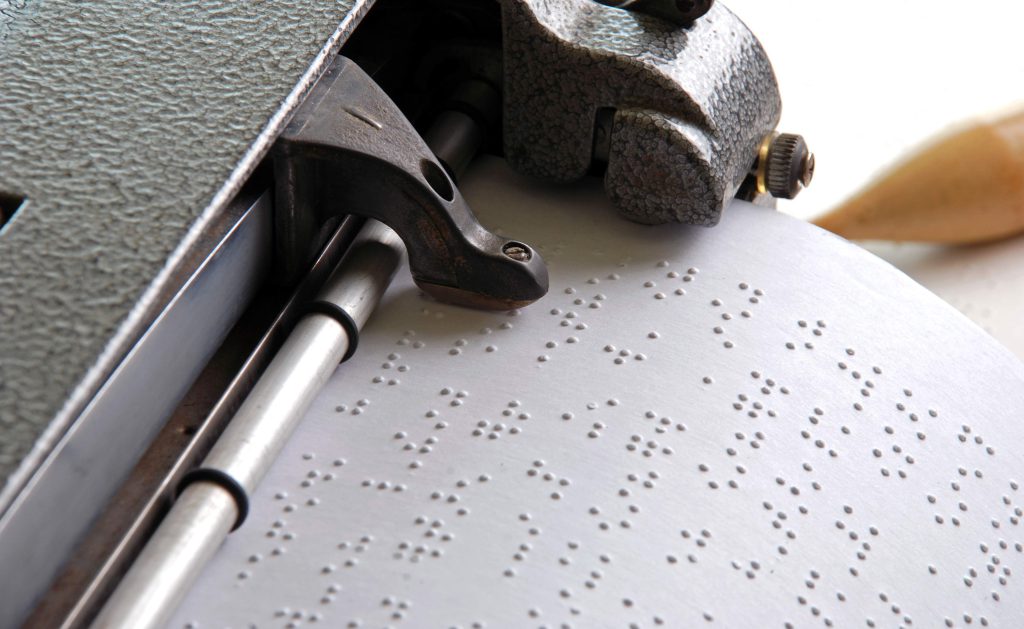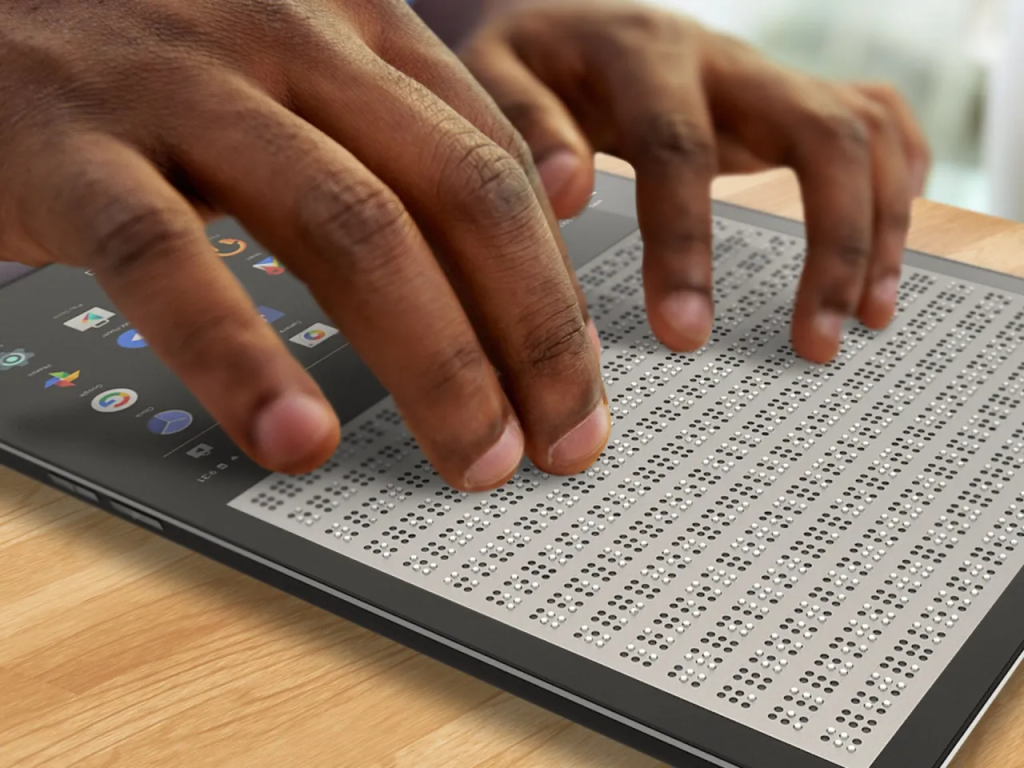Author: Shimbo Pastory, Co-authors: Johnson Mwamasangula, Eileen Massaga
This article was published in The Citizen Newspaper – Tanzania on 4th January, 2022.
Braille, as put by Cambridge, is a system of printing for blind people, in which each letter is represented as a raised pattern that can be read by touching it with the fingers.
The name has its origin in the name of its inventor Louis Braille, a Frenchman who launched the project in the early 1800s. He is said to have developed Braille by modifying the system of ‘night writing’ which was used in the military.
The Braille system is a complete and sufficient language on its own, in that, it can cover all conversational and emotive communications, alphabets, numbers, punctuations as well as capitalizations.

According to experts, Braille is transferrable through print media and can be written with a stylus and a slate, in the same way as writing printed scripts using pen and paper. Braille is also produced using a Braille machine which resembles a typewriter and comprises six keys and a space bar.
The official recognition and observance of International Braille Day on the 4th of January every year, which is Louis Braille’s birthday commemoration, is of benefit to the visually impaired population.
This is because it is one of the revolutionary and milestone discoveries that have helped to bring inclusivity and empowerment to the world.
Braille guarantees the visually impaired quality education as they will be able to read books, write, and keep records. At their peak, Braille readers can be as fast as experienced print readers and can read 300 to 400 words per minute.
Globally, as per research on the global prevalence of blindness and distant and near vision impairment which was published by iOVS Journal in 2020, out of the global population of 7.79 billion people in the year 2020, 41.9 million were visually impaired.
This is a massive number, more or less like entire populations of countries like Algeria, Morocco, or Poland. Braille opens doors for communication; the visually impaired have a lot of insight to share with the world.
In Tanzania effort is being done to enable various groups of people with disabilities to get equal opportunities and right of way in education, health, social security and psychosocial development.
In our conversations with Mr Omary Sultan Mpondelwa who is the Director of Tanzania League of the Blind (TLB), he spoke of the problem of admission of children with the blind in schools.
The country upholds the policy of inclusive education, but there is a massive lack of equipment, and schools are not sufficiently provided with education.
Mr Omary acknowledges that the government and the ministry of education have been very supportive and listening. There are special needs teachers in schools, but they are few in the category of the blind.
He adds that assisting technologies that can be used in special education, especially for the blind are not easily acquired because they are expensive.
Mr Emmanuel Mhehwa, who also works at Tanzania League of the Blind (TLB), testifies that most schools that have visually impaired students are from time to time provided with the necessary equipment for the students with blindness like Braille machines and embossers.
The government prioritizes the employment of special education teachers. Though at the moment few schools provide Braille training, and most of them are primary schools.
According to the Tanzanian law, Mr Emmanuel says, any office with more than 20 employees is required to have 3 per cent of chances reserved for people with disabilities. This was supposed to be a guarantee for people with disabilities to secure jobs, but there seem to be systemic flaws that hinder the practicality of this.

However, he says the 2019 Marrakesh Treaty, is underway and with its implementation, it will help to have more translations of books into Braille text so that many will access different contents from all over the world.
We had an opportunity to speak with Dr Hadija Jilala, a Senior Lecturer of Translation and Kiswahili at the Open University of Tanzania, and founder and chairperson of Dhahabu Foundation for Children and Youth with Disabilities (DFPYD), based in Dar es Salaam.
From her experience of working with the visually impaired, one of the biggest challenges is that there are no friendly infrastructures, especially for children. Most children do not have a white guide cane, as such they are not able to get to school on time, get injuries, and lack consistency in school.
This is a big challenge as it makes them concentrate on thinking about their impairment rather than their studies. This also contributes to societal prejudice as they are always seen as helpless people.
Together with that, most buildings are constructed in a way that young children with visual impairment cannot just cope with.
More so, most children with visual impairment are mixed with those without, they have difficulty coping with the strain to catch up. The government doesn’t assign people to help them in schools, and if it does they are not sufficient.
With her experience teaching at University, Dr Hadija elaborates that in universities, even those who use Braille, are taught in class by teachers who are not specialized in special education. This is understandable, but there is a need to have some basic special education training for all lecturers.
Victor Sizya is an inclusive education advocate and founder and executive director at Nyayo za Maarifa, an NGO that advocates for equal education opportunities for children.
He says the Tanzania ministry of education has made a substantial effort to ensure that children with disabilities are given embossed exams which makes them perform better.

However, there is still a challenge in books as mostly the visually impaired are limited to what they hear from the teachers’ verbal presentations.
There is a massive deficiency of both curricular-based books, and there are almost no extra-curricular books for the visually impaired.
The visually impaired take a lot of time in exams because they are graded in the same way as those who are not impaired. The time given is not enough, especially as they approach the exams differently and are often struggling with the computers’ imperfections and the speed to finish up as fast.
That might be one of the reasons they do not perform well, which as a result makes them rank low in the competitive scale for job opportunities.
Tanzania needs to revisit her policies and practice in this field to be able to empower more people with visual impairment and to extinguish the societal bias that people with blindness are helpless, or that they cannot contribute to society.
The government needs to invest in providing Braille textbooks and audiobooks that will be helpful to people with visual impairment.
With International Braille Day not being celebrated at the national level awareness is hindered, the responsible ministry may consider this in the coming years. With these efforts in place, no one will be left behind.